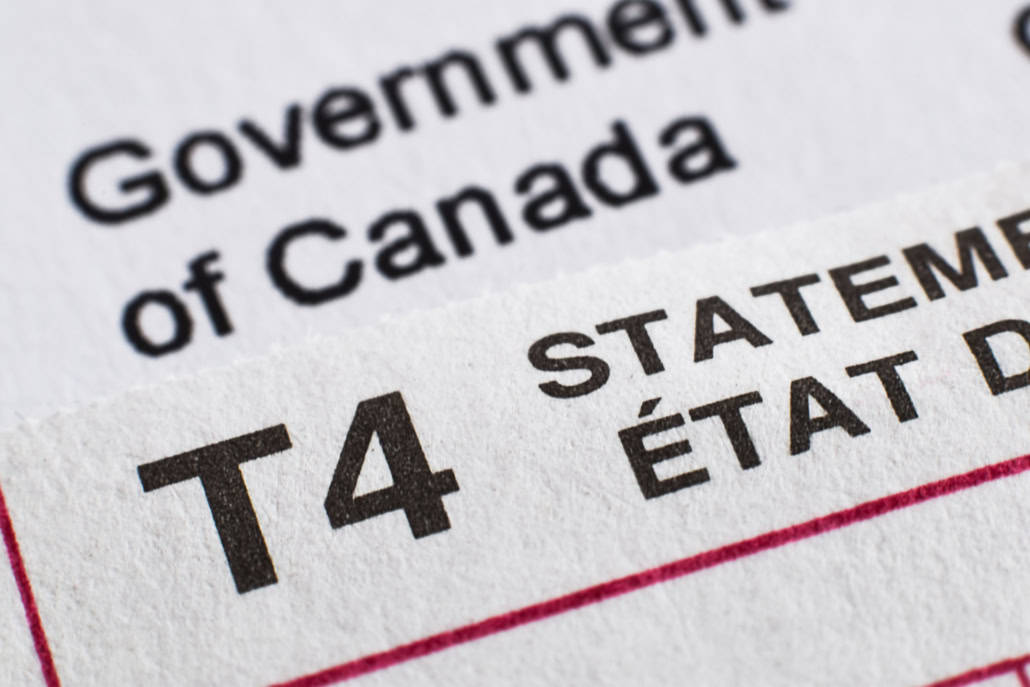January tax news: Claiming capital gains exemptions, reporting assets outside Canada–and more

CLAIMING YOUR CAPITAL GAINS EXEMPTION ON THE SALE OF SHARES
The Lifetime Capital Gains Exemption (LCGE) is an incredibly valuable tax exemption. Every individual is entitled to this exemption and it can currently (for 2024) exempt a gain of up to $1,016,836 (the amount is indexed to inflation each year).
In Ontario for example, the tax savings from the LCGE can be worth up to about $272,000 in 2024.
However, sadly, the LCGE is not available in respect of all capital gains. It is generally only allowed on the sale of private company shares, and certain farming and fishing property. In particular, it applies to shares which meet the definition of “qualified small business corporation shares” (QSBC).
Often, business owners wrongly assume that because they own their own business, they are automatically entitled to the LCGE when that business is sold. This is not the case! The LCGE will be available only if certain tests are met in relation to the shares.
24-month holding test
First, the shares of the business must be sold. Often business sales are structured as asset sales by the corporation, which business purchasers tend to prefer for a number of tax and legal reasons (including being able to claim capital cost allowance on depreciable assets). However, for the seller of a business, it is usually preferable to sell the shares of the business (and therefore to sell the company and all of its associated rights and obligations).
The decision as to whether a business sale is achieved by way of a share sale or an asset sale (a combination of both is also possible) will normally be the subject of commercial negotiation prior to sale. However, for a seller, a share sale (at least in part) is essential in order to claim the LCGE.
Another requirement for the shares is that the seller (or a person related to them) must be the only person to have held the shares in the 24-month period leading up to the sale. If any unrelated person has held the shares at any point during this period, the shares will not qualify for the LCGE.
An important point to note in this regard is that shares issued directly from the corporation are generally deemed to have been held by an unrelated person in the period before issue. So, if new shares have been received directly from the company, and they have been held for less than 24 months, these shares will likely also not qualify for the LCGE.
50% asset use test
A second test that must be met relates to the assets of the business. In the 24 months before the sale, more than 50% of the fair market value of the assets of the business must be used principally in the active business of the corporation carried on primarily in Canada (or the active business of a related corporation similarly carried on).
If the corporation holds shares or debt of a “connected” corporation, these may also count towards the 50% threshold, provided the connected corporation meets this 50% test itself, and provided the 24-month holding period test is met for the shares or debt.
The determination of whether corporations are “connected” is subject to another set of complex rules. However, corporations will normally be connected if one controls the other, or holds at least 10% of the voting shares and 10% of the value of the other.
The 50% test is easily met in some cases, but in other cases it can be the most onerous requirement to qualify for the LCGE. Note that the test must be met for the entirety of the 24-month period leading up to a sale. Therefore, any momentary breach would disqualify the shares from LCGE treatment.
This is a particularly important provision where a corporation holds non-business assets, such as portfolio investments or excess cash. In this scenario, the value of these assets must be constantly monitored to ensure that the combined value of all non-business assets never reaches 50% of the value of all assets held by the corporation.
A corporation is allowed to hold certain cash reserves and to have this counted as an active business asset, but there is a limit. The CRA’s view on whether cash is necessary for the business, or whether it is instead excess cash, is that the cash should be considered an active business asset if its removal from the business would destabilize the business as a whole. Therefore, there is no fixed amount that is allowed. Instead, one must assess the cash requirements of the business.
Where a corporation does have non-business assets, to the extent that the value of these is a concern for LCGE purposes, certain planning steps can be taken. For example, excess cash could be used to pay down debt or to buy active business assets.
Alternatively, it is possible to reorganize the corporation to allow for excess, non-active, assets to be transferred to a different corporation (this is commonly known as a “purification”). By doing so, the company being sold can be kept “pure”, i.e. can continue to meet this 50% test, despite the build up of non-active assets.
Small business corporation test
A final test that must be met is that, at the time of the sale, the corporation must be a “small business corporation”. This term does not mean what it seems to; it is a defined term with a very specific definition.
Firstly, the corporation must be a “Canadian-Controlled private corporation” − a corporation resident in Canada whose shares are not traded on a public stock exchange and which is not controlled by non-residents or by a public company. This is usually the case for most small businesses, but the definition is complex and needs to be reviewed carefully.
Secondly, at the time of sale, “all or substantially all” of the value of the corporation’s assets must be used principally in the corporation’s active business carried on primarily in Canada (or the business of a related corporation similarly carried on), or must be shares or debt of a connected corporation.
The CRA generally interprets “substantially all” as meaning 90% or more of the value of the corporation’s assets.
As this is a point-in-time test (i.e., it needs to be met only at the time of sale, in contrast to the 50%-holding test), it easier to plan to ensure that this test is met at the relevant time, even though it is more restrictive than the 50% test in terms of non-active asset value.
For example, all non-active assets can be moved out of the corporation immediately before the sale to ensure compliance, even if the “all or substantially all” test has never been met by the corporation in the past.
Planning to maximize the LCGE available
Although these QSBC tests can be quite demanding to comply with, the benefits are obvious. Ensuring compliance can translate into very significant tax savings, even in the provinces with the lowest tax rates, and higher amounts in future years as the LCGE increases over time. Of course, since this is a “lifetime” exemption, if you have already used part of it in past years, your ability to use it now is reduced by your past claims.
If a sale is anticipated far enough in advance, with proper planning and professional advice, it is possible to increase these savings further.
For example, it may be possible to reorganize the business well in advance to include other persons as shareholders, thereby increasing the possibility that additional LCGE amounts can be claimed on a sale.
This is often done by way of an estate freeze, which we’ll discuss in next month’s Tax Letter. As part of a freeze of the corporation, for example, a spouse or child can be brought in to hold shares and take advantage of their LCGE on a subsequent sale.
Alternatively, or additionally, it is possible for a family trust to become a shareholder. The major benefit of this is that the LCGE amounts of several beneficiaries may become available, as the trust can allocate any gain on its shares to one or more beneficiaries.
Any attempt to benefit from the introduction of additional shareholders for this purpose usually must be done well in advance of a sale, as the new shareholders will only benefit from the growth in value of the company after the freeze. In other words, the company must grow enough after a freeze for the new shareholders to realize a gain against which they can use their LCGE.
To fully use a second LCGE, for example, the corporation’s value would have to grow by over $1 million following the freeze.
For most business owners, the LCGE is a crucial tax exemption which should be available. However, its availability should not be taken for granted. Given the requirement to meet various conditions for 24 months before that sale, professional advisors should be consulted at the earliest opportunity for long-term planning for the exemption.

SHOULD YOU PAY TAX IF YOU HAVEN’T FILED A RETURN?
In our September 2023 Tax Letter, we discussed whether you should file a return if you can’t pay the associated tax liability. This month, we reverse the question – if you are late in filing your tax return, should you nevertheless pay money into the CRA to cover the tax?
This might happen because your return is complex and you haven’t been able to collect all the information you need to file – but perhaps you do have a rough idea of how much tax you will need to pay for the year.
Regardless of the reasons for filing your return late, tax on that return is due and payable from April 30, except to the extent tax has been withheld at source or you have paid instalments in advance.
Generally, penalties apply to late filing rather than late payment of tax (except for the late payment of instalments). The penalties for late-filing were discussed in our September 2023 Tax Letter.
However, interest will be charged on any late tax payments from the normal payment due date (April 30, for individuals) until the taxes are paid. The current interest rate for overdue taxes is 10%, compounded daily.
Given the significant interest charges – and the fact that this interest is non-deductible for tax purposes, even if you have a business reason for not paying on time − it is a good idea to estimate the tax due for the year and make a payment to CRA by the normal payment due date. You should also keep current on your installment obligations.
However, there is one potential exception to this – if the taxes are due from a corporation, and you are years late in filing the corporation’s return, and if you might be overpaying.
The Income Tax Act provides that the CRA must refund any overpayments made provided that the tax return is filed within three years of the end of the taxation year. Refunds are paid with interest, compounded daily, but a lower interest rate (for individuals, 2 points below the [currently 10%] rate charged on late payments, and for corporations, 4 points below).
So, if you are 2 years late in filing a return, and you have overpaid, getting a refund of any overpaid tax should be routine.
However, things get more complicated if you file after this three-year refund period.

ASSETS OUTSIDE OF CANADA? CHECK IF YOU NEED TO REPORT THEM
If you have assets located outside of Canada, make sure to check whether you are required to declare these, as the deadline for 2023 is the same as that for your tax return. Penalties can be very significant if you are required to declare these and you don’t.
The basic rule is that Canadian residents who at any time in 2023 owned “specified foreign property” with a total cost of more than $100,000 (CAD), must file a form (T1135) to report the existence of these assets, as well as any income or gains arising in the year from them.
If the total cost of the reportable assets is $250,000 CAD or more, more detailed information is required.
Specified foreign property includes assets such as cash in foreign bank accounts, shares of foreign companies (even if held with a Canadian broker), and overseas properties that are not held for personal use (for example, a Florida condo used just for vacations and not rented out is excluded).
In addition to personal-use property, there are various other assets that are exempt form this filing requirement such as certain registered retirement accounts (e.g., 401(k) and IRA accounts), and property used in an active business.
This filing requirement can be easily overlooked, and the penalties can be significant. The minimum penalty for late filing is $100 but accumulates at a rate of $25 per day, up to a maximum of $2,500 after 100 days. If the failure to file is intentional or due to “gross negligence”, the penalties are much higher, and can be 5% of the cost of the foreign assets that should have been disclosed.
Note that this is purely a filing obligation, and that no additional tax is due as a result. Nevertheless, the potential penalties can make any oversight in respect of this form very costly. (All penalties are non-deductible for tax purposes.)
If you have overlooked filing this return for previous years, relief from penalties and interest may be available under the Voluntary Disclosures Program (VDP), if the CRA is not already aware that you should have filed, has not initiated audit action, and if you report the oversight voluntarily.
If the CRA has already told you that you should have filed this for a prior year, or if CRA has already received information about your foreign assets from other countries, the VDP may not be available. In limited cases, relief may be available under the Taxpayer Relief provisions. These were discussed in our October 2023 Tax Letter.

AROUND THE COURTS
BEWARE OF EMPLOYER / CONTRACTOR STATUS
Do you hire individuals to perform tasks for your business? Do you have domestic helpers such as nannies or caregivers? Ensure that you understand the nature of the relationship and that you report the payments appropriately.
This is a topic that arises fairly regularly in the courts – has an individual been hired as an independent contractor, or are they in fact an employee?
The distinction is very important, as the two classifications have very different tax consequences. If a person is hired as an independent contractor, the contractor will be earning business income, and must report this accurately as part of their own tax return. The reporting obligations on the hiring party are relatively minimal in this respect (a T4A slip must be issued in some cases).
However, if the person is classified as an employee, the obligations on the employer are quite burdensome. For example, the employer must deduct income tax, Canada Pension Plan (CPP) contributions and Employment Insurance (EI) premiums from amounts paid to the employee and must report and remit these source deductions to the CRA. The employer must also report the pay on a T4 slip and may have provincial reporting obligations as well (e.g. Worker’s Compensation).
Employers also have their own share of CPP and EI amounts to pay in respect of the employee.
If an employer incorrectly classifies a worker as an independent contractor rather than an employee, and doesn’t make the required remittances, the penalties can be significant.
There is no definitive test to determine whether someone should be treated as a contractor or as an employee. In addition, entering into an agreement with the individual where you both agree to one status or the other does not guarantee that the CRA will agree with this status if the circumstances suggest otherwise.
Each relationship must be considered on its own merits when determining employee/ contractor status. The courts have developed a list of factors, each of which tend to indicate either an employee relationship or a contractor relationship. All of these factors should be analyzed, and a conclusion can then be drawn on the balance of factors.
The factors usually considered are:
Degree of control over work – if the payor closely controls and oversees the manner in which work is performed, and the time at which the work is done, this is more indicative of an employer-employee relationship than if the worker has control over this.
Provision of tools – if a worker uses the payor’s tools to perform the work, this suggests that they are more likely to be an employee than if they use their own tools for work.
Subcontracting work – Can the worker bring in their own assistants to help with the job, or to fill in for them at times? This suggests that they are an independent contractor, as employees normally cannot do this.
Financial risk – does the worker shoulder the burden of potential losses (or an obligation to fix mistakes with no further pay) if the work is not performed adequately? Employees are not usually on the hook for such losses, while independent contractors usually are.
Opportunity for profit – Employees usually have a fixed salary or pay per hour and, other than potential bonuses, are generally not entitled to a share of profits directly. Independent contractors, on the other hand, are more likely to benefit from an efficient job through increased profits.
The recent Tax Court of Canada appeal of Balatoni v. Minister of National Revenue is a good example of such a misclassification. In this case, the taxpayer owned an industrial kitchen and hired two pastry chefs to bake strudel for hotel and convention centre customers.
The chefs were required to follow a strict family recipe belonging to the taxpayer when baking, and the taxpayer trained the chefs personally in this regard. The work was undertaken in the taxpayer’s industrial kitchen, using equipment supplied by the taxpayer.
The chefs were paid an hourly rate for their services, and if one chef was unable to work, the other chef stepped in. Neither chef had a written contract.
When the chefs lost their jobs and applied for EI, the taxpayer took the view that the chefs were independent contractors, as she rarely visited the kitchen. The Minister disagreed.
The Tax Court reviewed the specific facts of the case and found against the taxpayer, ruling that the chefs were in fact employees. The Court cited, amongst other things, the fact that the taxpayer had control over the chefs’ work (through the strict family recipe which had to be followed), and that all equipment was provided by the taxpayer.
The court also noted that the chefs could not hire assistants (one chef would simply step in for the other if required) and that the chefs had no risk of loss or opportunity for profit.
Thus, the chefs were employees, were entitled to EI, and the taxpayer would end up liable for payroll deduction obligations.
***
This letter summarizes recent tax developments and tax planning opportunities; however, we recommend that you consult with an expert before embarking on any of the suggestions contained in this letter, which are appropriate to your own specific requirements. For assistance with your tax planning and accounting needs, contact a member of our team.


